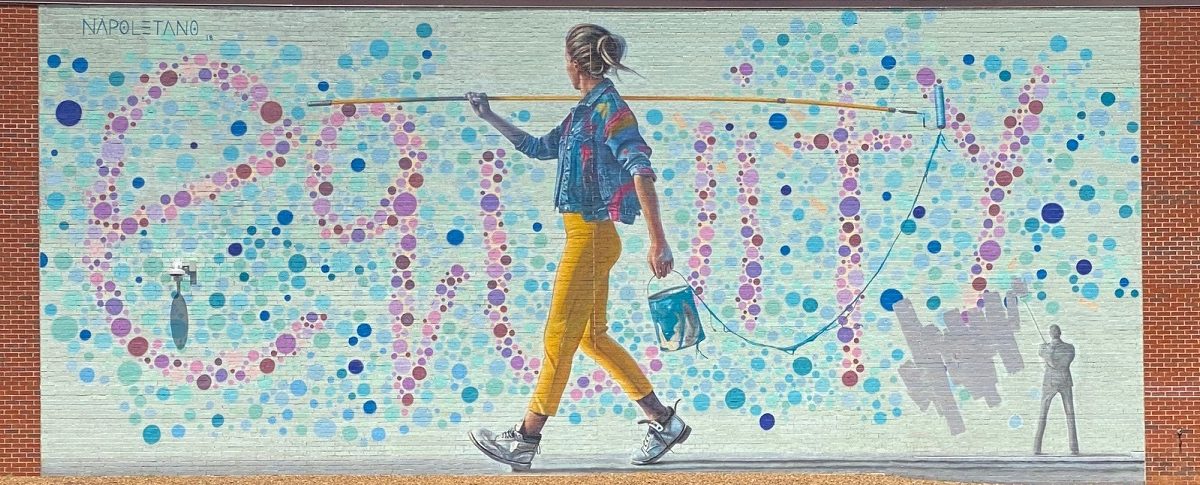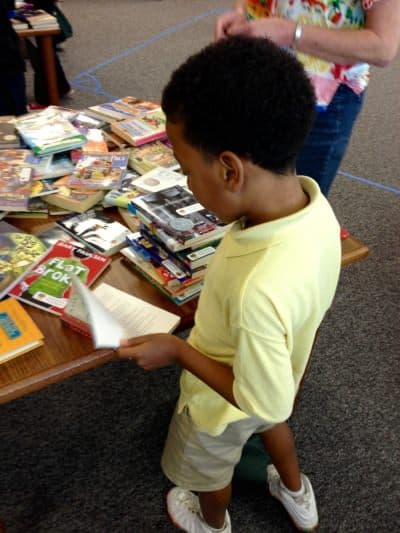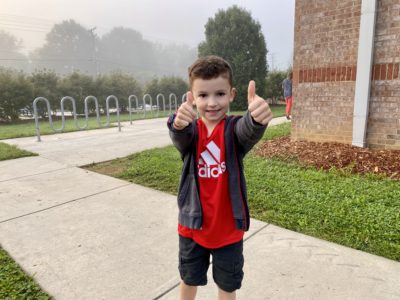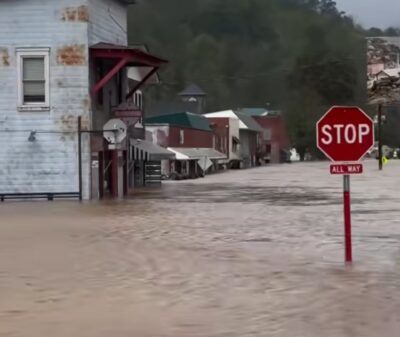
The work of diversity, equity, and inclusion (DEI) happens in the small decisions made in the day-to-day of any organization.
The next step of EdNC’s DEI journey has been to examine our choice points between article inception and article publication, with more conscious inclusion as our aspiration.
As a reminder, last year we published our comprehensive playbook for how to implement a DEI strategy in a news organization, including an ongoing equity audit.
Our process for assessing choice points
In August 2023, Katie Dukes on our team conducted 1-hour interviews with 11 team members (plus a self-assessment) to help EdNC’s leadership learn more about how our stories move from inception to publication.
She was asked to assess choice points as well as examples of how we already incorporate conscious inclusion into our work.
Here is the working definition of choice points we are using: Choice points are opportunities for leaders to pause, to reflect, to generate options, and enact changes that advance diversity, equity, inclusion, and belonging across the fault lines (see below).
Here is why they are important: Looking for opportunities to shift the status quo can create cumulative change that will help level the playing field for people served by our organization.
But first, a look at types of bias
Ahead of the interviews, we asked our team to watch this video about recognizing types of bias. While this video is about bias as it shows up in philanthropy, we used it to get clear on the types of bias that show up our work.
This video helped us establish as an organization shared beliefs, including:
- We all have bias.
- The people we serve matter.
- Noticing bias requires a process for people to better understand and assess what they see and what they don’t see.
It also helped us begin to identify ways in which types of bias show up in our work, for example:
- Beauty bias, and our preference for sources who use standard English language.
- Affinity bias, and understanding how it influences which stories we are drawn to.
- Halo (and horn) bias, and how it impacts who we want to spend time with, where we go for stories, who we partner with, and our evaluation of best practices — as well as where we don’t go, who we don’t work with, etc.
- Confirmation bias, and how we look for evidence to confirm what we already believe to be true. This awareness is especially important when it comes to narratives about particular communities.
- Contrast bias, which impacts comparisons we create in our minds as we are seeing things that may not be appropriate, for instance comparisons between rural and urban areas.
If we are able to notice these types of bias, then we are able to choose to set them aside.
The interview script
This is the interview script Dukes used in the interviews.
We’re chatting today because I’m helping EdNC’s leadership learn more about how our stories move from inception to publication. As you know, we all hold various unconscious biases, and they may creep into how we do our work without us realizing it. Conscious inclusion is one way of combating that, and I’m looking for examples of how we’ve already incorporated that into our processes and where it could be added. Ready to help me find out?
Learning
- Where do you tend to get ideas for what to write about? How often does a story originate from you? How often is it assigned?
- How do you start your reporting or research process? Where do you go for information?
- How do you decide who to interview for an article and how do you get connected to them? (What determines which county, district, college, or classroom you end up in? When you’re on location, what is your process for checking in on potential biases in who you meet? Interview? Photograph?)
- What do you do when you recognize unconscious bias during your reporting process? How do you self-correct?
Writing
- How do you decide you’re done researching/reporting, and you’re ready to start writing?
- Walk me through your writing process. (What is your process for checking in on bias when selecting quotes and photos?)
- What do you do when you notice gaps in your research/reporting during your writing process?
Editing
- Who typically puts eyes on what you’ve written before publication?
- What does the editing process typically look like for you? (Does it include the opportunity to reflect on who’s being quoted and which images are being used?)
Wrapping up
We are trying to discern your awareness of the different types of bias we all have and whether you have a process for conscious inclusion.
- Are there other choice points in your process we should be aware of?
- Do you have anything else you’d like to share about how you research, report, or write?
- Is there any feedback on this topic that you’d like me to share with our leadership team?
Findings
Dukes found “an earnest desire to practice conscious inclusion” across team members, which matters. If this had not been true, our next steps would have been different (see Melba Newsome’s step 3 below).
She also found the need for developing successful strategies for doing so. Team members, she found, are “looking for guidance on how to be more consistently inclusive, and many specifically requested we develop a checklist for helping them do so.”
Reporters and researchers, she found, need a checklist, which can be used to implement a series of self-checks and external checks by editors.
The editor-in-chief and the director of content work together to assign most of our news articles, and our monthly 100-county pulse checks and commitment to 10 underserved counties inform those assignments. But our team drives most of our content.
Dukes found three sources for content origination by the team:
- Who we know → Members of our team have developed a vast array of relationships across the state and the nation, and much of what we write comes from those existing relationships.
- Where we go → When members of our team show up in person, we often learn about things happening in the community that we would not have learned about otherwise.
- What we read → We’re voracious readers at EdNC and many story ideas come from email newsletters, local newspapers, social media posts, and research publications.
Dukes found, “there are significant opportunities to be more consciously inclusive in the relationships we’re building, the locations we’re visiting, and the media we’re consuming.”
Dukes also found that when reporters and researchers realize they have missed opportunities to be inclusive well into the writing and editing stages of content production, then time constraints factor into whether they go back to fill gaps created by implicit biases, like getting new perspectives and quotes or taking additional photos.
Ahead of developing our checklist
As we began to develop a checklist for the team, it was important to us to honor the work others have already done to develop processes for content analysis.
The work of the Maynard Institute
The Maynard Institute was founded in 1977 “to promote diversity and antiracism in the news media through improved coverage, hiring and business practices.”
Through his own reporting and leadership of newsrooms, “Robert C. Maynard identified the five ‘fault lines’ of race, gender, class, generation and geography as the prisms through which we in this country see the world.”
- Race/ethnicity: Black, Asian, Hispanic/Latino, Native American, mixed race, white.
- Gender: male, female, transgender, gender neutral, non-binary, agender, pangender, genderqueer, two-spirit, third gender, and all, none or a combination of these.
- Generation: youth (0–19), 20s, 30s, 40s, 50s, 60s+, boomer, generation X. While age can alter a point of view, that same point of view is often defined by generational experiences.
- Class: rich, upper middle class/wealthy, middle class, working class, poor.
- Geography: urban, suburban, rural; plus regional differences/preferences
Here is Maynard’s content analysis kit, which informed our development of a checklist for the EdNC team.
Melba Newsome’s 10-step guide
Award-winning journalist Melba Newsome’s 2020 Reynolds Journalism Institute fellowship led to the publication of this “10-steps to more inclusive reporting” guide for newsrooms.
She found, “Quality journalism means inclusive journalism and, like the people we report on, journalists are also liberal and conservative, economically privileged and disadvantaged, rural and urban. In the absence of opportunities to reflect on our identities, we can miss our own blind spots around preconceived stereotypes and assumptions about individuals and groups.”
Here are the 10 steps, which informed our development of a checklist for the EdNC team.:
- Identifying the challenges with inclusive storytelling;
- Rethinking expertise;
- Understand what reporters think about diversity;
- The why of sources diversity and inclusive reporting;
- Diversity is a necessity, not a nicety;
- Where to find diverse sources;
- Build your own database;
- Track your progress;
- Understanding the barriers; and
- Overcoming the barriers.
In terms of tracking progress, she suggests reporters keep a daily, weekly, monthly record of who and where and what they are including in their scope of work.
A starting point for the EdNC checklist emerges
Dukes identified many of the following existing practices from her interviews with EdNC team members. Others were identified through the research of our colleagues referenced above.
In 2024, our reporters and editors will be using and iterating this checklist as stories are going through the publication process.
The goal of the checklist is to keep conscious inclusion across the fault lines at the forefront of our thinking through the entire inception-to-publication process.
Our checklist
Here is our organizational statement on equity:
Being in healthy, positive, and equitable relationships with residents, leaders, organizations, and communities is critical for impactful partnerships and to support systems level change. It requires hard conversations about difficult issues, creation of intentional space, interrupting false narratives, choosing to not be complicit in issues or practices that perpetuate inequities, good intent without a hidden agenda, and the resistance to render individuals invisible or villains when issues get uncomfortable and hard.
[ ] Check the U.S. Census Bureau’s quickfacts before heading into community to check our assumptions about the demographics of the place we are visiting. Also check “Talk like a Tarheel” to honor the preferences of local communities in their own self-identification. [ ] Check our previous coverage of the leader, organization, place, or issue. Pivot to others as trends/preferences are noticed. [ ] Are we seeking out people, places, and stories with and about different mindsets than our own? Are we getting past the gatekeepers? [ ] Is the frame of the story in our minds deficit-oriented, and if so, is there a shift that can be made to an asset orientation? [ ] When setting up the visit to the community, say out loud what we care about, for instance:- “We’d love to hear from a diversity of voices while we’re there.”
- “We practice conscious inclusion in our work, so we’d love to meet with folks from a variety of backgrounds and lived experiences.”
- “Who else should I talk to?”
- “What else should I know?”
- “What do you want people to know?”
- What makes the story newsworthy?
- What constraints affected the reporting?
- Does the coverage accurately reflect the community?
- Are there opportunities for follow up reporting to be more inclusive?
And now we practice
Thank you to our equity auditor and coach, Tara Kenchen. This work would not happen without your leadership.
Our approach is aspirational.
We will not do all of these things perfectly all of the time, and we will make mistakes. It requires trying to do the work with fidelity daily.
Recommended reading



